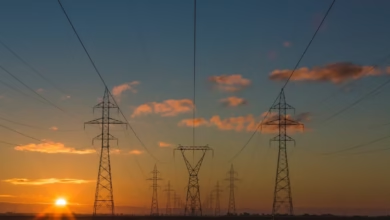Analyzing Global Oil Consumption Patterns: Trends, Impacts, and the Future of Oil Alternatives

The global oil landscape is undergoing significant transformations, influenced by a myriad of factors ranging from geopolitical dynamics to technological advancements. As industries worldwide grapple with the implications of fluctuating oil prices and evolving energy demands, understanding oil consumption patterns has never been more critical. This article delves into the current trends in global oil usage across various sectors, focusing on the intricate web of oil market trends and their implications for energy security and sustainable practices. We will analyze the influence of OPEC and shale oil production on oil prices and global oil trade dynamics, while also exploring the growing role of alternatives such as biofuels and natural gas in shaping future consumption patterns. By examining these elements, we aim to provide insights into the complexities of oil refining, storage, and transportation, as well as the environmental impacts of oil and the innovative oil technologies that are steering the industry toward a more sustainable future. Join us as we navigate the multifaceted world of oil consumption and its implications for the global economy and the environment.
- 1. Understanding Oil Consumption Patterns: Analyzing Global Oil Market Trends and Their Implications
- 2. The Impact of OPEC and Shale Oil on Oil Prices and Global Oil Trade Dynamics
- 3. Exploring Alternatives: The Role of Biofuels and Natural Gas in Shaping Future Oil Consumption Trends
1. Understanding Oil Consumption Patterns: Analyzing Global Oil Market Trends and Their Implications
Understanding oil consumption patterns is essential for grasping the dynamics of the global oil market and its far-reaching implications. As we analyze current trends, we see a complex interplay between oil prices, OPEC policies, and emerging technologies impacting oil exploration and production. The global oil trade is influenced by factors such as geopolitical tensions, which often drive fluctuations in crude oil prices and affect energy security for many nations.
In recent years, we have witnessed a notable increase in shale oil production, particularly in the United States, which has transformed the landscape of oil supply chains. This surge in supply has altered conventional market dynamics, leading to lower oil prices and prompting traditional oil-producing countries to rethink their strategies. The rise of offshore drilling and oil sands extraction has also contributed to these shifts, expanding the available oil reserves and pushing the boundaries of oil refining capabilities.
Environmental concerns have spurred interest in oil alternatives, such as biofuels and natural gas, as industries seek to reduce the environmental impact of oil consumption. This transition is not without challenges, as the oil industry grapples with regulatory compliance and the need for sustainable practices in oil transportation and storage.
Moreover, the demand for petrochemicals continues to grow, further complicating the oil market trends. As industries rely heavily on these products, oil investing remains a critical consideration for stakeholders looking to navigate the volatile landscape. Oil price hedging strategies are also essential for companies to manage risks associated with price fluctuations, ensuring stability in their operations.
As we look ahead, the implications of these trends will shape the future of oil geopolitics and the overall energy sector. Understanding the evolving patterns of oil consumption is crucial for policymakers, investors, and consumers alike, highlighting the importance of adapting to a changing global energy framework.
2. The Impact of OPEC and Shale Oil on Oil Prices and Global Oil Trade Dynamics
The dynamics of the global oil trade are significantly influenced by two major players: the Organization of the Petroleum Exporting Countries (OPEC) and the burgeoning shale oil industry. OPEC's role in regulating oil production among its member countries allows it to exert considerable control over crude oil prices. By coordinating production levels, OPEC aims to stabilize the oil market and manage fluctuations in oil prices. This often means that when demand rises, OPEC can decide to increase production to prevent prices from soaring, thereby maintaining a delicate balance in the oil supply chains.
Conversely, the rise of shale oil production, particularly in the United States, has introduced a new level of complexity to the oil market trends. Shale oil extraction has allowed the U.S. to become one of the world’s leading oil producers, challenging OPEC's traditional dominance. This surge in production has not only affected global oil prices but also reshaped oil geopolitics, as countries seek to secure energy security through diverse sources. The competition between OPEC and shale producers can lead to price wars, impacting oil prices globally.
Additionally, the interplay between OPEC and shale oil has implications for oil refining and downstream oil industries. When crude oil prices drop due to oversupply, refiners benefit from lower input costs, which can lead to increased production of petrochemicals and biofuels. However, sustained low prices can also hinder investment in oil exploration and offshore drilling projects, potentially affecting future oil reserves.
The environmental impact of oil extraction and consumption cannot be overlooked, as both OPEC and shale oil production methods face scrutiny regarding their carbon footprints. This has prompted a growing interest in oil alternatives and the development of cleaner energy technologies. As countries navigate the challenges of oil regulation and compliance, there is an increasing need to balance economic growth with environmental sustainability.
In summary, the relationship between OPEC and the shale oil industry is a crucial factor in shaping oil prices and the global oil trade landscape. Understanding these dynamics is essential for oil investors and stakeholders in the energy sector, particularly as they consider oil price hedging strategies and the future of oil consumption in an evolving energy market.
3. Exploring Alternatives: The Role of Biofuels and Natural Gas in Shaping Future Oil Consumption Trends
As the global community grapples with the environmental impact of oil, the exploration of alternatives like biofuels and natural gas has become increasingly significant in shaping future oil consumption trends. With rising oil prices and the need for energy security, industries are actively seeking solutions that can reduce reliance on crude oil while maintaining efficiency in oil refining and transportation.
Biofuels, derived from organic materials, present a promising alternative to conventional oil products. They can be produced from various sources, including agricultural crops and waste materials, which enhances sustainability within the global oil trade. The integration of biofuels into the energy landscape not only diversifies fuel sources but also aligns with the growing demand for eco-friendly energy solutions. As industries invest in oil alternatives, the potential for biofuels to mitigate greenhouse gas emissions becomes a crucial factor in oil market trends.
Natural gas, another key player in the shift away from oil, serves as a cleaner-burning alternative for various applications. With advancements in oil technologies and the development of shale oil reserves, natural gas has gained traction in sectors traditionally dominated by oil. For instance, natural gas is increasingly utilized in petrochemicals and power generation, providing a viable option that supports energy security while reducing the environmental impact of oil consumption.
Moreover, the geopolitical landscape surrounding oil can influence the adoption of these alternatives. OPEC's decisions regarding oil production and regulation can create fluctuations in oil prices, prompting industries to explore biofuels and natural gas as a hedge against price volatility. By investing in oil alternatives, companies can enhance their compliance with environmental regulations, establish more resilient supply chains, and navigate the complexities of oil geopolitics.
In conclusion, as industries pivot towards more sustainable energy solutions, biofuels and natural gas are positioned to play a crucial role in shaping future oil consumption trends. These alternatives not only offer a path to reducing the environmental impact of oil but also address the need for energy security in an ever-evolving global landscape. The continued exploration of oil field services and technologies will be essential for maximizing the potential of these alternatives in the context of a shifting energy paradigm.
In conclusion, understanding the evolving oil consumption patterns is crucial for navigating the complexities of the global oil market. As we have explored, the interplay between OPEC's influence, the rise of shale oil, and the shift towards alternative energy sources such as biofuels and natural gas significantly impacts oil prices and trade dynamics. The trends in oil refining and transportation highlight the need for innovative oil technologies and compliance with environmental regulations, especially considering the growing emphasis on energy security and the environmental impact of oil extraction and consumption.
As industries adapt to these changes, oil investors and stakeholders must remain vigilant about market fluctuations and the potential for oil price hedging strategies. The future of oil consumption will likely be shaped by advancements in offshore drilling, enhanced oil recovery techniques, and the development of oil reserves, including oil sands. By keeping a close eye on these developments within the petrochemical landscape and understanding the geopolitical factors at play, we can better anticipate how oil supply chains will evolve. Ultimately, a balanced approach that considers both the economic benefits of oil and the imperative for sustainable practices will define the trajectory of global oil consumption in the coming years.
References:
[Include relevant references here]




